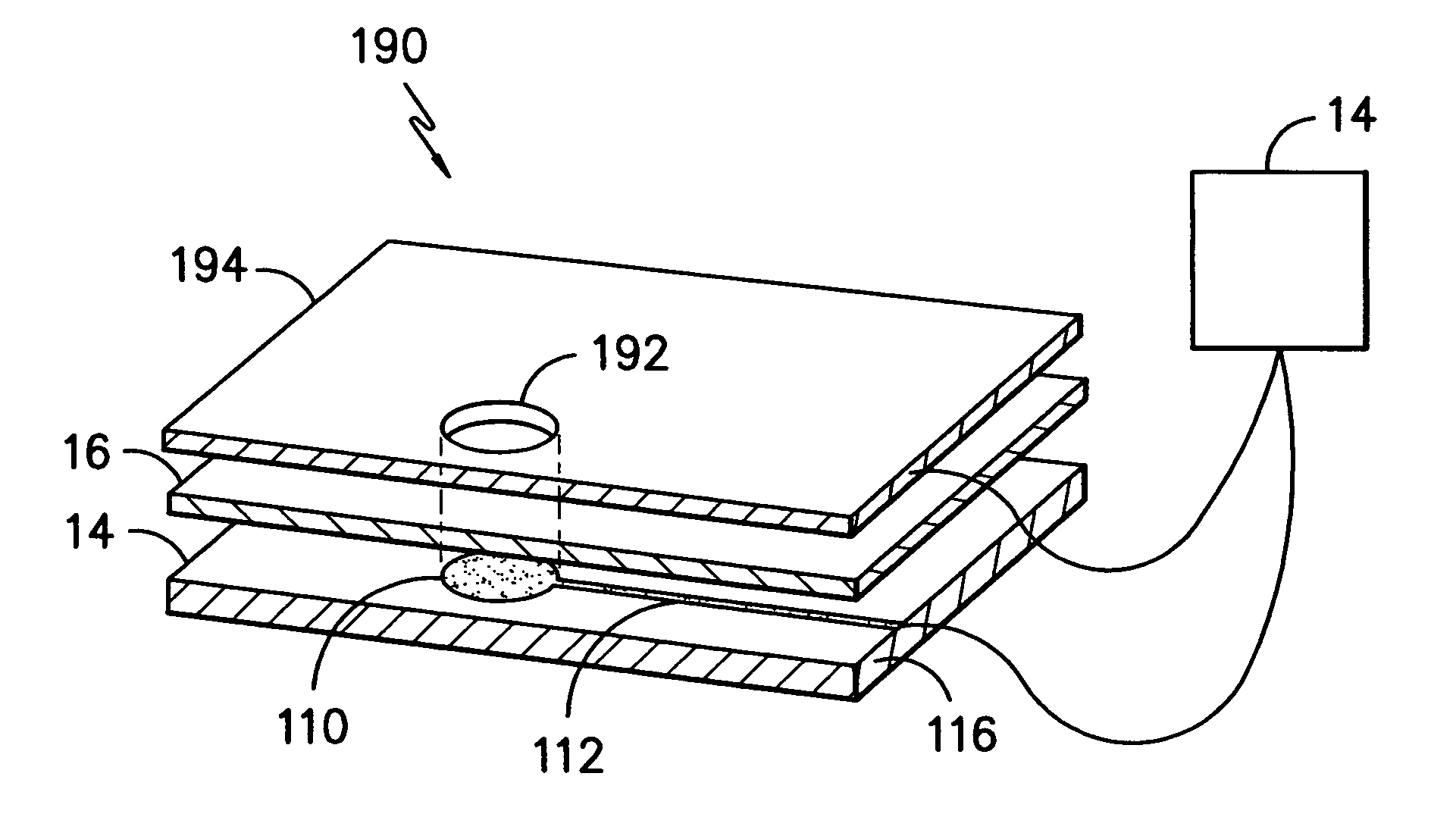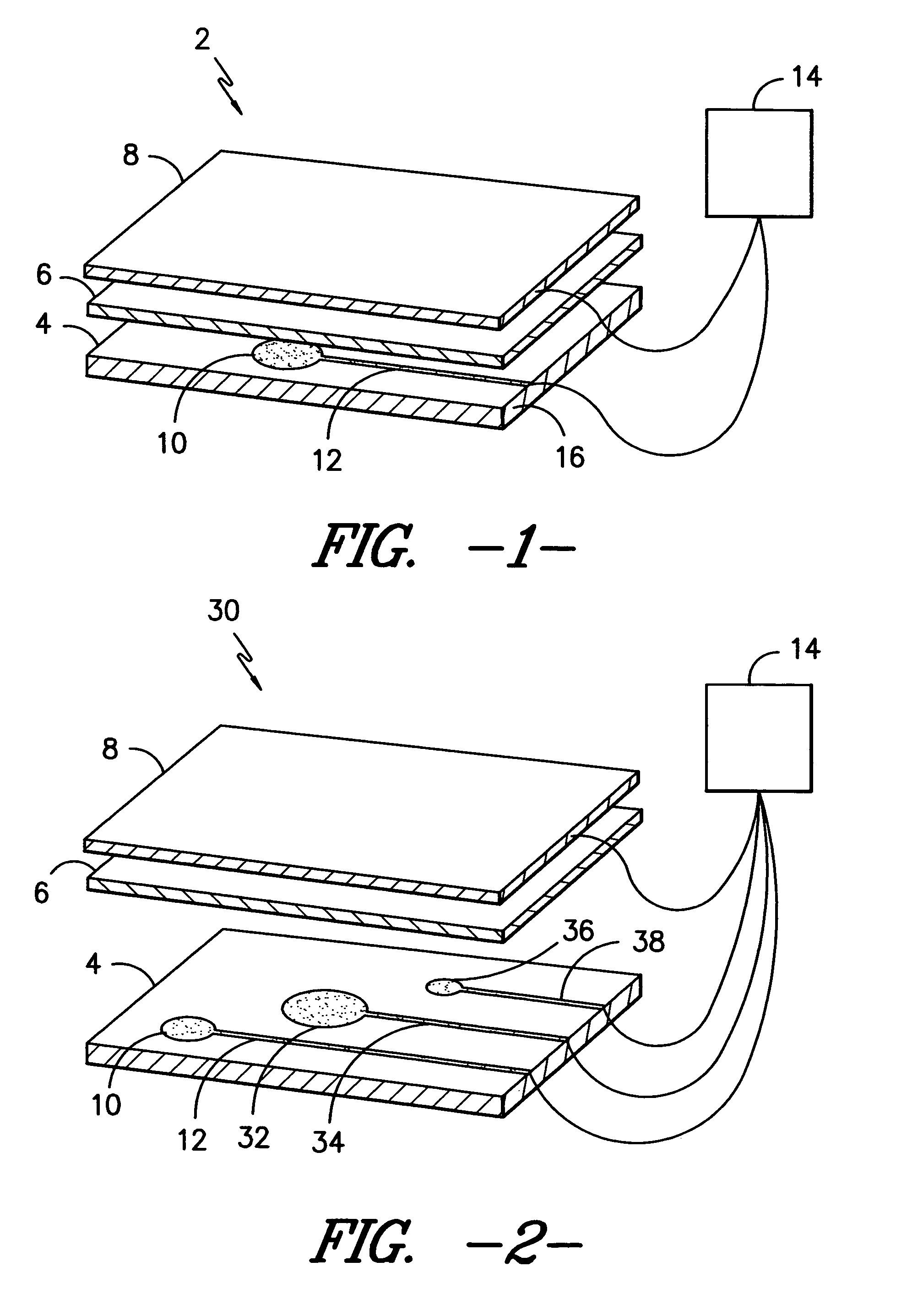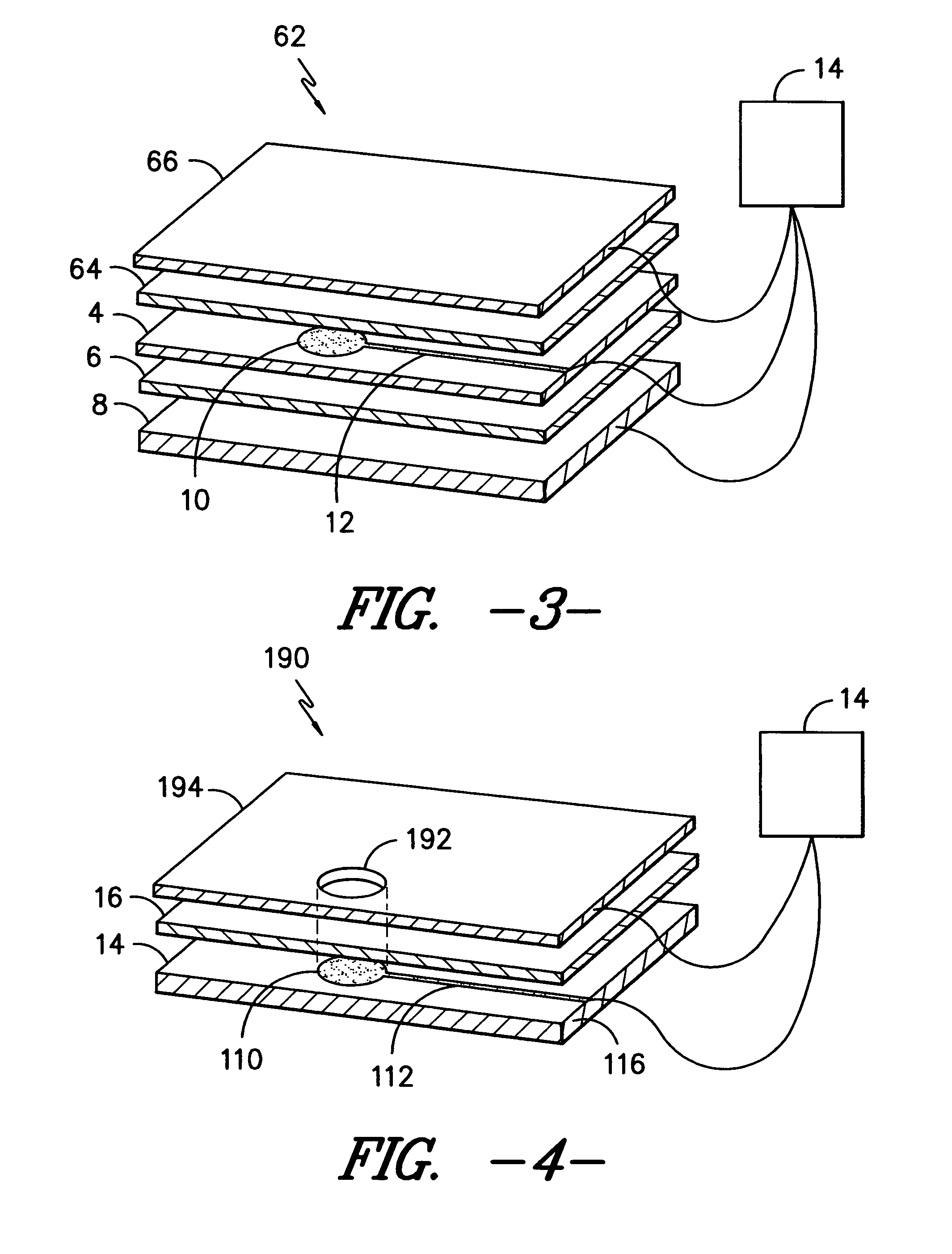Printed capacitive sensor
a capacitive sensor and capacitive coupling technology, applied in the direction of resistance/reactance/impedence, instruments, pulse techniques, etc., can solve the problems of not teaching a system, capacitive coupling may not be well suited to quantitatively measuring the applied pressure or proximity, and cannot work, etc., to achieve fast and easy connection, large capacitive sensor array, and large fabric
- Summary
- Abstract
- Description
- Claims
- Application Information
AI Technical Summary
Benefits of technology
Problems solved by technology
Method used
Image
Examples
example
Example 1
[0063]A switch panel was made by laminating together multiple layers as shown in FIG. 5. All percentages are by weight unless otherwise specified.
[0064]Two identical resilient structures were made, consisting, in order, of:
[0065]I) a protective layer 104 of 100 g / m2 CelFil 100 spunbonded polyester nonwoven fabric from Polymeross y Derivados of Mexico,
[0066]II) a 1st conductive layer 101 of 100 micron thick Velostat 1704 conductive film from 3M Corporation of St. Paul, Minn., and
[0067]III) a resilient separating layer 102 of 8 mil thick Duraflex PT9300 polyurethane film from Deerfield Urethane of Mass. The 1st conductive layer 101 was used as a ground plane to shield the device from outside interference.
[0068]Next a 2nd conductive layer 108 was made starting with the same nonwoven fabric as in protective layer 104. This was coated with a conductive paste consisting of a mixture of 60% Hycar 26-1199 binder from Noveon of Gastonia N.C., 10% SFG-15 graphite from Timcal of Bodio...
example 2
[0072]A second structure was made, identical to that in Example 1 except that the polymer in the resilient separating layer 102 was replaced with 3 mil thick M823 silicone film from Specialty Silicone Products of Ballston Spa, N.Y.
example 3
[0073]A second structure was made, identical to that in Example 1 except that the polymer in the resilient separating layer 102 was replaced with 44 mil thick T-1505 HypurCEL polyurethane foam from Rubberlite Incorporated of Huntington, W.Va.
[0074]Table A shows the measured capacitances of each of the samples in Examples 1-3. These values are after subtracting out the 44 pF of capacitance between the cables leading from the panels to the multimeter. The pattern of the printed detector and trace elements is shown in FIG. 6. Detectors 120 were connected with the edge of the device buy the long trace 122 and the short trace 121. Also printed were the ground connections 126 and the pin connections 124.
[0075]
TABLE ALong trace (pF) 122Short trace (pF) 121SampleQuiescentPressedQuiescentPressedExample 176843440Example 270834156Example 329391424
[0076]Table A shows that a thinner dielectric will give a larger capacitance, but that a thicker dielectric may give a larger relative change in capa...
PUM
| Property | Measurement | Unit |
|---|---|---|
| voltages | aaaaa | aaaaa |
| voltages | aaaaa | aaaaa |
| thickness | aaaaa | aaaaa |
Abstract
Description
Claims
Application Information
 Login to View More
Login to View More - R&D
- Intellectual Property
- Life Sciences
- Materials
- Tech Scout
- Unparalleled Data Quality
- Higher Quality Content
- 60% Fewer Hallucinations
Browse by: Latest US Patents, China's latest patents, Technical Efficacy Thesaurus, Application Domain, Technology Topic, Popular Technical Reports.
© 2025 PatSnap. All rights reserved.Legal|Privacy policy|Modern Slavery Act Transparency Statement|Sitemap|About US| Contact US: help@patsnap.com



